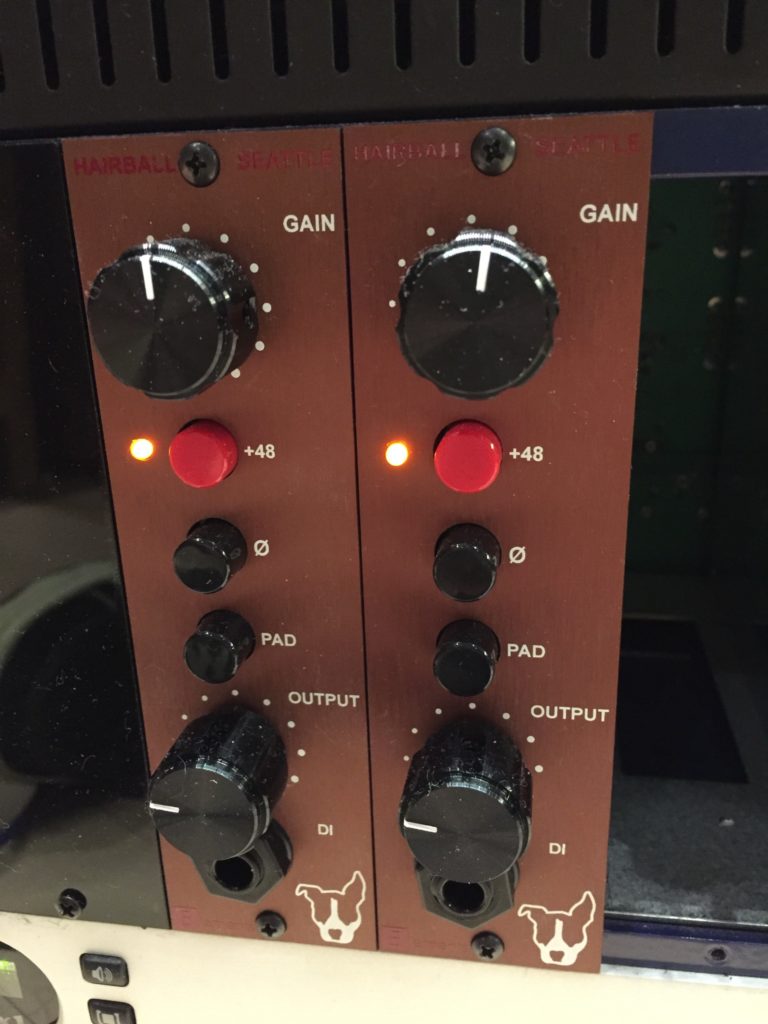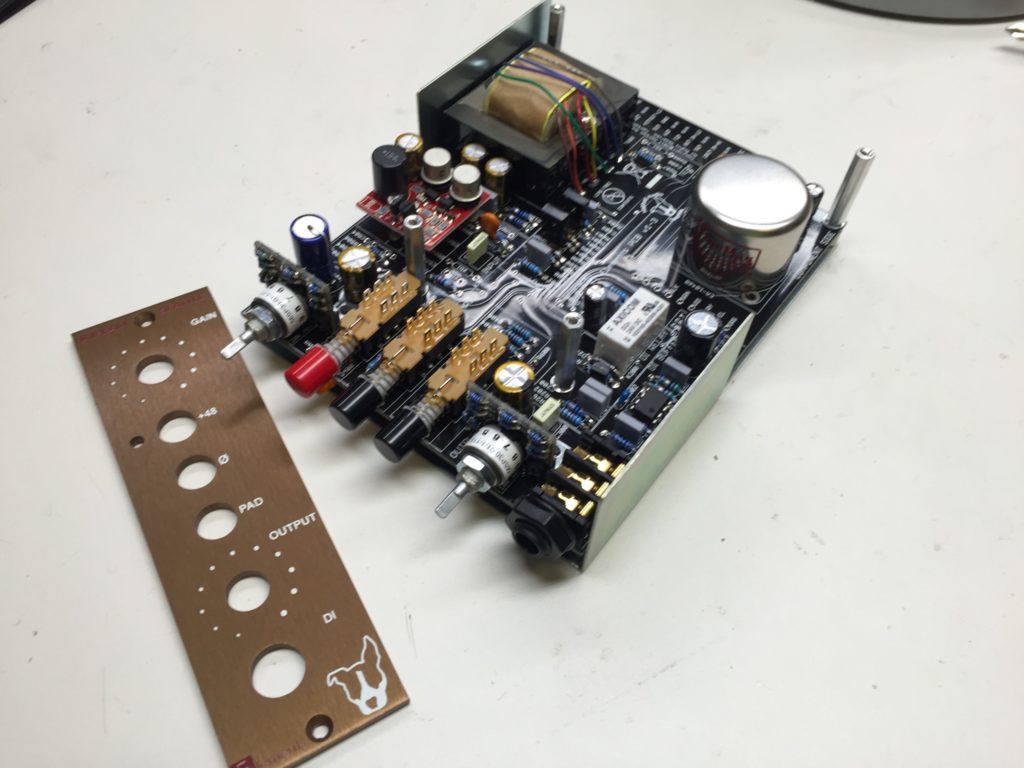I am a creature of momentum. I tend to work on the same project in spurts. So it’s perhaps not surprising that the ol’ soldering iron has been very, very busy lately.
About a year ago, I did a lot of poking around for 500 series DIY kits that I could build to fill out our studio rack. I ordered a bunch, and they have (mostly) sat in their shipping boxes in a tall stack next to my electronics bench. With the bench cleared off and the iron heated up, over the next month or so I’m hoping to clear a lot of the backlog so we can actually start using them.
[blockquote blockquote_style=”boxed” align=”left” text_align=”right” cite=”” style=””]We’re already covered when it comes to “clean” and “pristine.”
In filling our the remainder of our arsenal, we’re engaged in a “race to the bottom” rather than a “race to the top.”[/blockquote]
With that in mind, work continues on the other three Hairball Audio/MNATS FET/500 1176 clones I wrote about in my last post. Staying within the same company’s product line, though, I have finished two other kits I purchased from Hairball Audio: a pair of their Elements Bronze series preamps.
The Elements series (Gold, Silver, Copper and Bronze) is a family of related preamps that use the same basic circuit framework, but offer different shades of “tone color” depending on the model you choose. You can’t really call the Silver model a “preamp,” though, in the sense that it’s not a finished product. It’s more of a baseline “platform” that Hairball makes available for tinkerers and circuit designers to build upon. The kit doesn’t include any input or output transformers, for one thing, so there’s a number of other decisions you have to make before you could even get any sound out of one of the Silver kits.

I’m not much of a tinkerer when it comes to circuit design, though. Not at the moment, anyway. So the Silver model doesn’t really appeal to me. The other three models, though, each offer a different tone color that’s useful in different situations. The Gold model has the “cleanest”, most uncolored sound, while the Copper uses elements intended to remind the listener of the sound of the famous Neve 1073 preamp. The Bronze model, meanwhile, is considered the most colored sounding of the three. Hairball describes the Bronze’s sound as “wooly, round and full of crunch.” It’s the preamp for “people who struggle to hear the differences between preamps.”
[blockquote blockquote_style=”boxed” align=”right” text_align=”left” cite=”” style=””]Hairball describes the Bronze’s sound as “wooly, round and full of crunch.” It’s the preamp for “people who struggle to hear the differences between preamps.”[/blockquote]
For us, the preamps we’re putting in our 500 series racks need to be all about color, and in as many variations as we can find it. We already have 16 channels of clean, “console-style” preamps in our rack, by way of two TRUE Systems Precision-8 preamps. So in filling our the remainder of our arsenal, we’re engaged in a “race to the bottom” rather than a “race to the top.” The goal is not try to find ways to record signals in an increasingly pristine fashion, but rather to find the most crunchy/dirty/warm/vintage sounds we can find; to get more–and different–colors in the palette. With that in mind, I quickly crossed the Elements Gold off my list. What about the Copper? I’m definitely interested in having the Neve 1073 sound represented in my rack, but I’ve already found another company’s DIY model that offers a better set of features in the same amount of space. More on those units in a future post.
Hairball Audio describes this as a “recommended for beginners” kit, and while it’s not particularly difficult, it’s not simple either. I certainly wouldn’t attempt one of these if it was my first build — not at $295. There’s nothing like the LED meter board in the FET/500, but there’s a reasonable number of components in this kit, a fair number of tiny capacitors that you have read with a magnifying glass and the usual parade of resistors that have to be checked one by one. Probably the trickiest item in the whole kit is the phantom power LED, which a) is soldered to the underside of the board and b) must be bent at a 45° angle off the board in order to poke through a hole in the faceplate. Regardless of your skill level, you still have to take your time and not skip any steps.
So, Bronze it is. I plan to use these units on bass guitar, kick drum, and drum overheads, particularly, but as always, some experimentation will be in order!
Share this:
- Click to email a link to a friend (Opens in new window) Email
- Click to share on X (Opens in new window) X
- Click to share on Facebook (Opens in new window) Facebook
- Click to share on LinkedIn (Opens in new window) LinkedIn
- Click to share on Pinterest (Opens in new window) Pinterest
- Click to print (Opens in new window) Print



